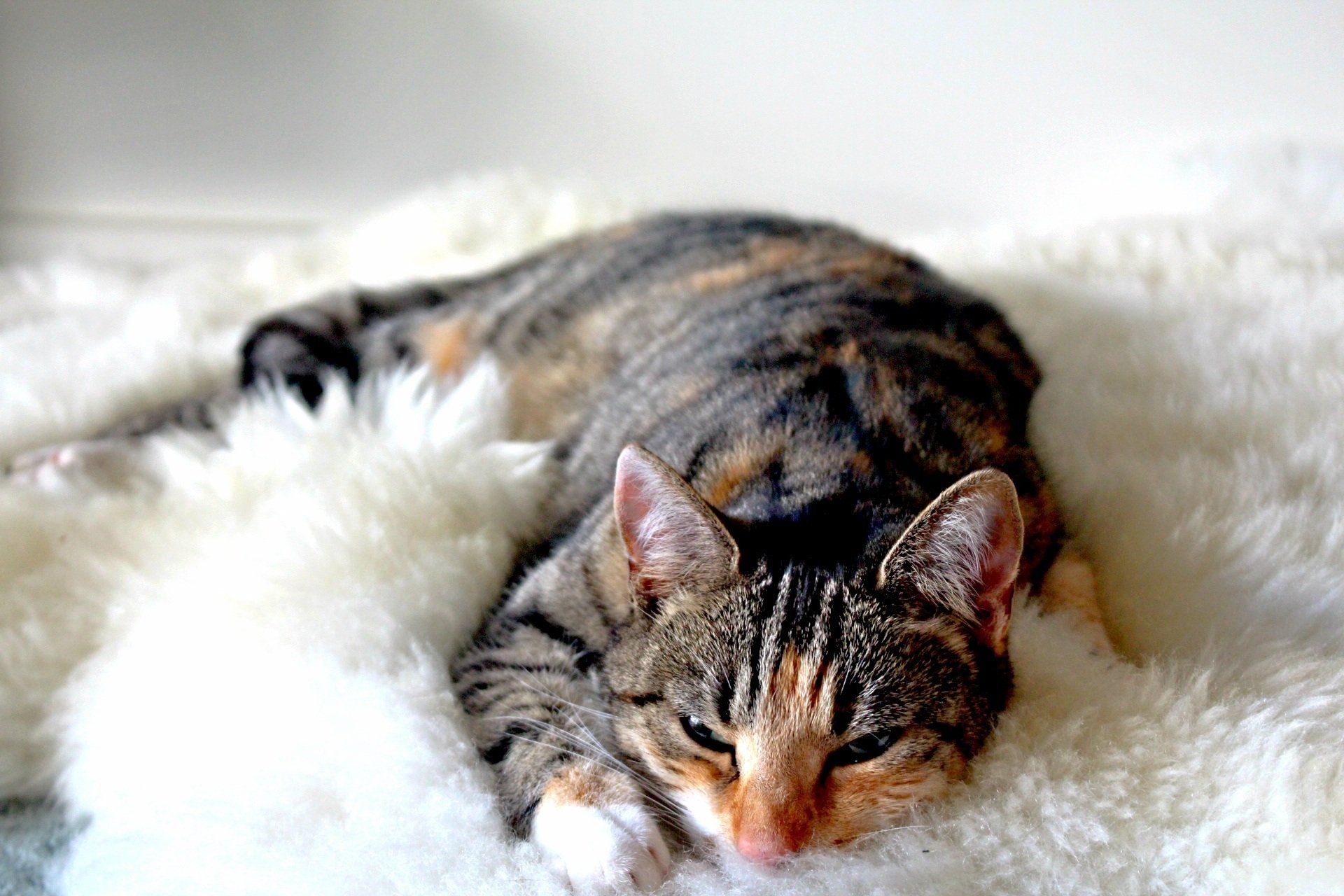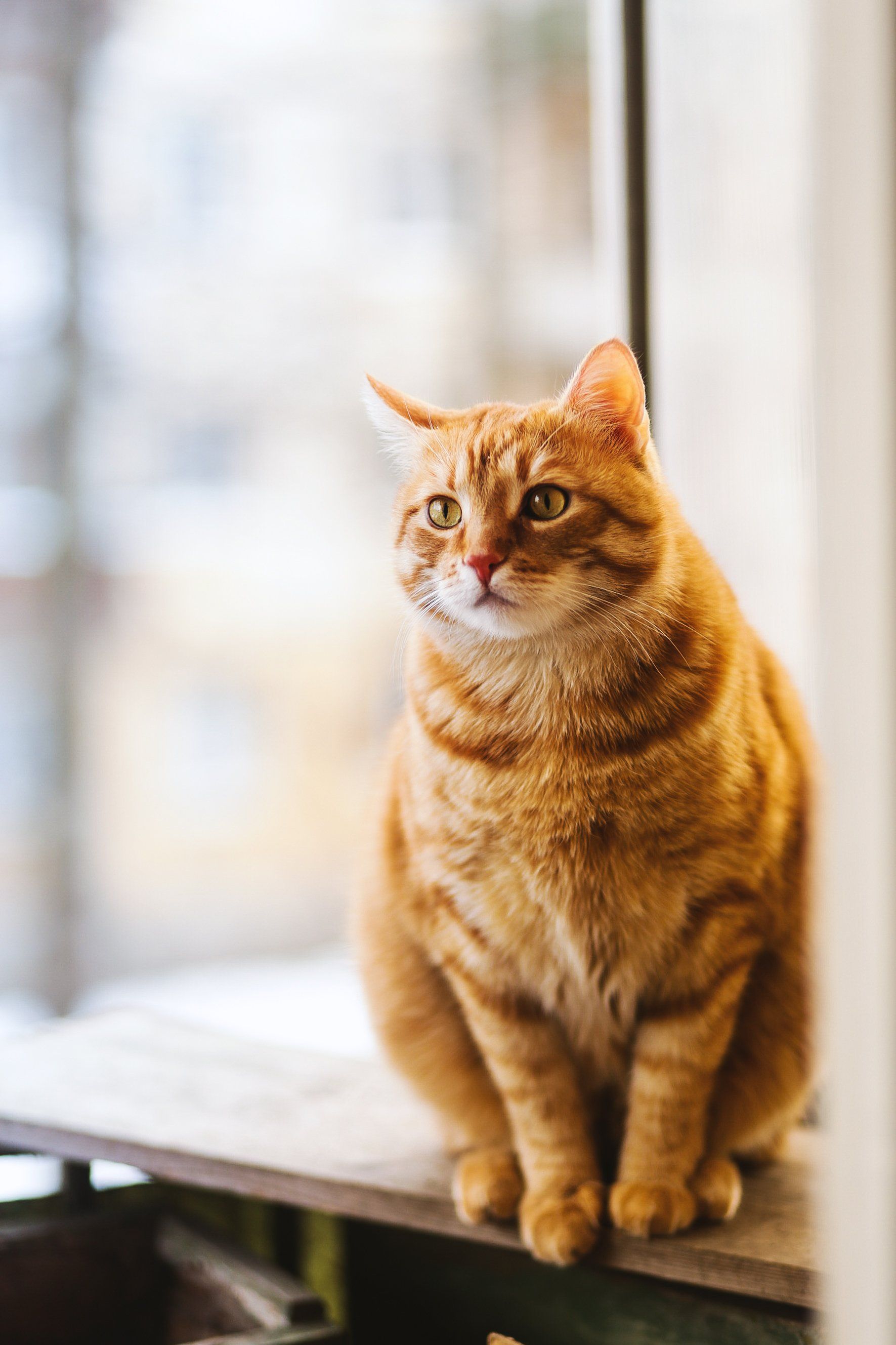Diabetes Mellitus
What is diabetes mellitus?
Diabetes mellitus is a disease that causes increased sugar (known as glucose) in a pet’s blood. Insulin is needed for the body to use sugar and diabetic pets do not make enough of it. Diabetic pets need insulin given by their owners in order to have this balance and stay healthy. Without insulin, the body must get energy by breaking down other fats. This causes your pet to lose weight even though they are very hungry.
What are the symptoms of diabetes?
- The most common symptoms of diabetes are:
- Drinking more
- Peeing more
- Weight loss even when they are eating more
- Drowsiness
There are other balance and eye problems that can be signs of untreated diabetes.
Which pets can get diabetes?
While any pet can get diabetes, it is seen mostly in overweight, older animals. Symptoms may get worse when pets are stressed.
Why do some pets get sick?
Most pets can handle high blood sugar for some time. However, using fats instead of their blood sugar as a fuel source can lead to severe changes to their blood. This concerning crisis, called diabetic ketoacidosis, requires intensive hospitalization and care.
Can diabetes go away? YES- in some cats.
The treatment for some cats with early or mild diabetes are weight loss and prescription food. Cats are more likely to stop being diabetic if treated with insulin injections and special food. Getting to a healthy weight is very important. The good news is that some cats actually return to a normal, non-diabetic state. Because diabetes can go into remission in some cats, it is important to watch them closely.
How is diabetes treated?
In most cases, diabetes is treated by giving insulin injections twice a day and feeding a special diet. Some pets need other medicines to make treating their diabetes easier.
Only give the insulin shot if your pet eats. Giving insulin when the blood sugar is low can be more harmful than the sugar level being too high for a period of time. For this same reason, if you make a mistake during the injection or are unsure if you or someone else in the household
already gave the insulin, do not give a second dose.
Insulin must be kept refrigerated. Before drawing up the insulin dose, gently rock the insulin bottle. Shaking the bottle will break down the medication and it will not work as well.
Signs of low blood sugar include weakness, pacing and staring, seeming dazed or confused, seizures, and extreme sleepiness. If any of these occur, give your pet a few tablespoons of Karo syrup to bring the blood sugar up quickly. If they are alert enough, feed a small meal. Consult with a veterinarian before giving the next dose of insulin. If your pet is not rapidly improving, seek emergency care.
Recheck blood sugar levels regularly with the veterinarian. Diabetics’ needs can change over time, and we may need to adjust the insulin dose. Once your pet is regulated well, recheck appointments are needed much less often. We also carry a device that allows you to track your pets sugar levels via a device reader from home. Ask us if you are interested in this option.
You can find helpful information on the internet about managing a diabetic dog at this website:

What is Arthritis? Arthritis is wearing of the joints over time. It is a common problem in older pets, especially large breed dogs. Any joint can be affected with arthritis, but the most common joints include the hips, knees, shoulders, wrists, elbows, and the back. While we cannot cure this problem, there are many things we can do to help your pet feel more comfortable. What signs will I see in my pet? The early signs include less activity, slow to jump, stiffness, and panting. Some pets may limp, whine, or shake. In cats, you may notice less movement, or urine outside of the box if having to go down or upstairs to use the box. How can I help my pet? Unfortunately, arthritis in pets, as in humans, cannot be cured. The treatment includes weight, pain management, and regular activity. A combination of medications and supplements are specific to each pet and their needs. Maintaining proper weight is the most important thing you can do for your pet to slow down arthritis and lessen pain. Pets can maintain a good weight through exercise, diets, and treating other medical problems. NSAIDs (non-steroidal anti-inflammatories) are the mainstay of arthritis treatment. These medications help with pain and reduce inflammation in the joints. There are multiple drugs in this group including Carprofen, Galliprant, or Meloxicam. We recommend blood work while using these medications. These may be used on an “as needed basis” in early arthritis or daily with more advanced arthritis. To start, we recommend a two-week pain medication trial to see if there are any differences at home since our pets cannot talk to us about their pain levels. Dasuquin Advanced is a chewable joint supplement. It contains glucosamine, chondroitin, MSM, and other natural ingredients that work to provide building blocks for healthy joints. Prescription Diets like Hill’s Science Diet j/d and Purina’s JM are made specifically for dogs with arthritis. These diets are well balanced and contain many of the ingredients in Dasuquin as well as high levels of fatty acids. Adequan is an injectable joint supplement. The injections can be given here at the hospital or at home. Many dogs end up receiving an injection every 1-3 months. Omega 3 Fatty Acids at high doses have been shown to decrease inflammation in the body overall and help with arthritis. We recommend a product called Welactin. Other pain medications can be given in addition to an NSAID based on the degree of your pet’s discomfort. These medications include gabapentin or tramadol. Steroids also relieve pain and reduce inflammation. Due to the frequent side effects, especially with long term use, they are usually reserved as a last line of medication. Therapeutic Laser is a supplemental tool that works to improve blood flow and increase oxygen and cell energy usage to reduce inflammation and pain. Both the patients and their family members get to wear goggles while a technician performs a treatment (usually less than 5 minutes per joint) while sitting on a comfy bed and eating treats. Treatments are typically started 1-2 times per week for 4-6 weeks and then spread out as the patient needs them, every 2-6 weeks. Acupuncture is a great supplement for pain management. Dr. Erika Bruner of Berlin, VT has an acupuncture office just for pets. Physical Therapy is a great way to improve muscle strength to prevent pain. Dr. Pam Levin is a certified pain doctor at BEVS that will work specifically with your pets needs to create an exercise plan.

What is inappropriate elimination? Inappropriate elimination is peeing and pooping outside of the litter box. This can be one of the biggest issues cat owners face. There are four different reasons that will cause cats to have this problem. 1. Environmental and Social Problems: These are the most common reasons for inappropriate elimination. Cats will pee or poop on some other flat surface because they don’t like something about the litter box. The main reasons cats dislike their litter box are because it is dirty, they don’t like the type of litter, it is in a dark or scary location, or the location is being protected by another cat in the house. 2. Feline Idiopathic Cystitis (FIC) or Feline Lower Urinary Tract Disease (FLUTD): This is a medical problem that creates pain in a cat's bladder, the same feeling a urinary tract infection does, but there is no infection in these cases. Please read our FLUTD handout for more information. 3. Underlying Medical Problems: Cats frequently respond to stress from a medical problem by peeing or pooping out of the litter box. This can be related to problems of the kidneys, thyroid, joints, or belly. 4. Marking or Spraying: This can be a normal behavior for cats, but it generally occurs when a cat is stressed, feels the need to mark its territory, or is not liking the litter box. The cat will lift the tail and pee on a vertical surface like the doorway, where other cats rest, new things in the house, or areas with lots of smells. Why is my cat doing this? We start by having a long conversation with you about what you are seeing your cat do and what the environment is like at home. Pictures of the litter boxes, maps of the house, videos of how the cats get along or what they are doing when they are pooping and peeing out of the box are very helpful to us. Then we will examine your cat. Based on the exam and what you are seeing at home, we will recommend a combination of tests like looking at a pee sample, blood sample, and xrays. How can I help my cat? We will first treat any medical problems your cat may have. If we determine that your cat is peeing and pooping out of the litter box due to something in the environment at home, we will talk about the following things to work on solving the problem: The Litter Box – there should be at least 1 litter box per cat plus one extra in the house. Litter: In general, we recommend a clumping, unscented clay litter. While this commonly works for most cats, there is quite a variety of textures out there and your cat may prefer (or dislike) one over another. Fill the box with at least 1 inch of litter Type of box: Some cats like a lid, some find a covered box confining or scary Location: Litter boxes should be in a quiet, well lit, and easily accessible area. Avoid putting them in high traffic areas or in isolated areas (ex. attic, basement). Maintenance: The litter box should be scooped twice daily. The litter should be completely removed once weekly. The box should be cleaned once monthly with warm, soapy water. Cleaning – If your cat has peed anywhere in the house outside the litter box, those places need to be thoroughly cleaned so the cat will not be tempted to pee there again. An enzymatic cleaner, like Urine Off, Nature’s Miracle, or Anti-Icky Poo should be used to not only remove the odor but also break down the proteins in the pee that humans cannot smell. Carpets should be pulled up so that the floor underneath can be treated. Carpet padding usually needs to be cut out and replaced. Clothing or mats that cats tend to mark should be taken up rather than remain where the cat can get to them. At Home Enrichment – Many of our pet cats are now indoor only, which means we need to work hard to provide enrichment and activity in the house that simulates outdoor life. The Ohio State Indoor Pet Initiative is a great resource for enrichment. Visit https://indoorpet.osu.edu/cats for more information. Resting and hiding: Cats need vertical spaces to rest and hide. These include cat condos, towers, and boxes. Scratching: Provide multiple scratching posts throughout the house. Many cat towers come with these built in. Interactive toys: Interactive toys can be used with or without food. These toys simulate hunting behavior and are fun to watch your cat play with! Creating a perch or a bird watching area can be fun as well. Outside visualization: If your cat can see other animals outside, usually cats, this can create stress for them. You may need to prevent your pet from being able to see those areas. Cat Conflict – Watch carefully for signs of conflict such as stalking, hissing, or staring between cats in your house. There are many resources for evaluating intercat behavior, or a behaviorist can do consultations in the home. Pheromone Therapy - Feliway is an odorless pheromone that reduces stress in cats. It can help with both stress in the house and cat conflict. It comes in a diffuser (like a glade plug in) that can spread the pheromone throughout a space in your home. Anti-Anxiety Medications - If you have addressed all of the topics above, we may recommend an anti-anxiety medication. These medications can be helpful but will always need to be given along with careful attention to your cat's environment.

What is hyperthyroidism? Hyperthyroidism is a common problem in older cats. It means they make too much thyroid hormone. What signs will I see in my cat? High thyroid levels make the body feel like it is working harder and faster than normal. The most common signs are increased activity, more meowing, increased hunger, and weight loss. Some cats will have vomiting, diarrhea, or increased thirst. With these changes many cats develop heart disease and high blood pressure. How can I help my cat? We diagnose this disease with a blood test. Because of other changes that happen to your pet’s body with this disease, we also often look at a pee sample and blood pressure. There are three treatment options: 1. Iodine Therapy: This is the gold standard of treatment. It is safe, effective, and for most cats will treat this disease for their life. Your cat will be treated at BEVS in Williston and will need to stay there for 5-10 days for monitoring and care. You can visit https://bevsvt.com/specialty-services/radioiodine-therapy/ for more information. 2. Medication: Medication is given by mouth twice daily for the remainder of your cat’s life. We can compound this medication into a gel that is placed on the inside of the ear if giving your cat oral medications is not possible. There can be occasional side effects for some cats like vomiting or extreme itchiness. 3. Surgery: Surgical removal of the thyroid glands can be an option for pets that cannot have the medication. For most cats no medication is needed after this surgery, but sometimes the gland can regrow after a few years. Ideally, we like to control your cat’s thyroid disease prior to having surgery. What happens after I start to treat my cat? About 3-4 weeks after starting the medication or having surgery or radioactive iodine treatment we recheck a blood sample as well as a pee test and blood pressure. These tests tell us if we have controlled the thyroid disease or if there are other problems. Cats whose thyroid disease is controlled have a good prognosis and live longer, happier, healthier lives.

What is Feline Lower Urinary Tract Disease (FLUTD)? FLUTD is a term used to describe different diseases that cause inflammation or irritation to the bladder. These conditions can range from mild to severe. Sometimes a cause is relatively easy to identify, such as infection. But we often see a condition when there is no true underlying cause which we call Feline Idiopathic Cystitis (FIC) . This is seen most commonly in young to middle aged cats. These cats tend to be overweight, eat a dry diet, have little exercise, or are indoor only. Stress increases a cat's risk of getting this disease, which can include developing a dislike of their litter box. What signs will I see in my cat? Because their bladder is inflamed and painful, we typically see the following signs: Trying to pee Peeing small amounts Many trips to the litter box Crying when peeing Licking near penis or vulva Peeing blood Peeing outside the litter box Is this an emergency? YES – in male cats that are showing these signs without peeing much or at all. Male cats can have a blockage in which cells plug the tube from the bladder. This is a serious condition that can lead to death and your cat should go to a veterinary hospital immediately. How do you diagnose this condition? When your cat comes to the hospital we will do a physical exam and look at a pee sample and sometimes take x-rays. How do I help my cat? Treatment in the hospital includes fluids and pain medications and, if necessary, using a catheter to unblock the bladder tube. In addition to medications, we try to figure out possible causes of these flare ups and ways to prevent them in the future. Increase water intake: Cats with this condition would ideally eat canned food to keep them well hydrated. Cats may drink more water if there is a water fountain system at home. Reduce stress: It is important to be aware of changes in the house or routine that may be stressful to your cat. Be sure to provide your cats with elevated surfaces, like a cat tree, to allow for an escape and hiding place. Feliway, a feline pheromone, has a soothing effect and can be used in a diffuser (like a glade plug in) or a spray. Some pets may benefit from anti-anxiety medications. See our handout on Inappropriate Elimination for more information. Reduce crystals: Crystals form from minerals in the urine that develop when the urine isn’t properly balanced. These crystals may irritate the bladder. There are prescription diets available in different flavors and textures to help prevent buildup of these crystals.

What is Cushing’s Disease? Cushing’s disease (hyperadrenocorticism) is a condition that occurs when your pet’s body makes too much stress hormone, cortisol, from the adrenal gland. This is mainly seen in dogs. What signs will I see in my pet? Drinking and peeing more than normal Hair loss, itchiness, and skin infections Panting More interest in food Vomiting Diarrhea Muscle weakness Potbellied appearance How do you diagnose this condition? After taking a history and examining your pet, we will start with standard blood work. Based on those results, if we believe your pet may have Cushing’s disease, we will set up a day for your pet to stay with us for a more specialized test called a Low Dose Dexamethasone Suppression test. This test requires three blood samples to be drawn over eight hours. Those results will confirm a diagnosis. How do you treat this condition? For most patients we treat with a medication called Trilostane (Vetoryl), given by mouth. After starting the medication, we do another blood test (ACTH Stimulation Test) to be sure your pet is on the right dosage. Sometimes it takes a few rounds of changing the dosage of the medication and doing recheck blood tests to find the right dose for your pet. What if I do not treat my pet for Cushing’s Disease? Many pets come to us because owners feel that the signs they are seeing in their pet are affecting their overall quality of life. If the condition is not treated, many of those signs continue to get worse. In addition, many untreated pets are more likely to have stroke-like events. Will the medication cure my pet? Medication is meant to manage Cushing’s disease, as we cannot cure this condition. With proper dosing and monitoring many pets go on to live comfortable, happy lives!

What is chronic kidney disease? It is a common disease in older pets, mainly in cats, in which their kidneys don’t function as well because of normal changes due to aging. What signs will I see in my pet? The first sign many pet owners see is an increase in drinking and peeing. Your pet might need to pee more often and go in abnormal places like outside the litter box or other places around the house. For more severe cases, pets will have a decreased appetite, vomiting, and weight loss. How can I help my pet? We diagnose kidney disease with a blood sample, a urine sample, and blood pressure. These tests together can give us an idea of how severe the disease is and the best forms of treatment. There are several different ways to treat chronic kidney disease. Diet: This is the cornerstone of treating chronic kidney disease. Prescription diets are created to have the right amount of protein and electrolytes to protect the kidneys and slow down the progression of kidney disease. Many cats can be finicky about what they eat so a very slow transition from your pet’s old food to their new prescription diet is important. We can find something for almost all pets as there are many different flavors and forms! Medications: Medications are chosen based on your pet specifically and can be different from pet to pet. o B vitamins: These are typically given as weekly or monthly injections under the fur. o Appetite stimulants: As many pets aren’t as hungry with chronic kidney disease, we will give appetite stimulants to make sure they are eating enough to maintain or increase their weight. o Iron injections: The kidneys are a big part of the body’s red blood cell production. When the kidneys don’t function properly, we frequently see a low red blood cell level (anemia). Iron injections can increase red blood cell levels and give your pet more energy. o Anti-nausea medications: Along with a decreased appetite, pets may feel nauseous because of built up toxins that their kidneys cannot get rid of. If your pet is vomiting, we will give them this medication. o Fluids: The more hydrate your pet is, the better they will feel, and the better their kidneys will work. Some owners will learn how to give fluids under the fur at home. o Antibiotics: Pets with chronic kidney disease can get urinary tract infections. Based on a urine sample this medication will be prescribed for your bet. o Blood pressure medications: Just like your pet’s red blood cell level, their kidneys are in charge of blood pressure. If your pet’s blood pressure is high, we will add this into their treatment plan. At Home Care: We want our pets to be as hydrated as possible with kidney disease. For some pets, adding a water fountain will encourage them to drink more. As they drink more or receive extra fluids this will mean they pee more. For cats it can be helpful to have more litter boxes in the house and for dogs more frequent walks may be needed. What happens after I start to treat my pet? It is important to watch your pet closely at home, as much of the follow up care is based on how your pet is feeling. Watch their drinking, peeing, appetite, vomiting, and activity level. Depending on your pet’s condition we will continue to look at blood and urine samples as well as blood pressure. Your pet’s condition can change over time so we may need to change their treatment plan over time. While we cannot reverse kidney disease, we can slow down the progression of the disease. Many pets with kidney disease can live happy and healthy lives for years.

Why is my pet so itchy? The most common causes of itchiness in pets are skin parasites and allergies. Both conditions are uncomfortable and may cause inflammation and pain to your pet. What are skin parasites? Skin parasites that most frequently cause itching include fleas and sarcoptic mange mites (scabies). Fleas or flea dirt can usually be seen on pets, but sometimes pets are itchy with only a few fleas or groom themselves so much we don’t actually see them. Scabies is less common and can be picked up from foxes or other dogs. It is very contagious and very itchy - typically at ears, elbows and hocks (ankles). Though they can sometimes be seen under a microscope, mites are generally very hard to find, so we recommend treating with Bravecto because this will treat most cases of scabies and control fleas. What Are Allergies? An allergy is an overreaction of the immune system to a harmless substance called an allergen. People with allergies usually have “hay fever” (watery eyes, runny nose and sneezing) or asthma. While dogs and cats can also have respiratory allergies, it's more common to see allergies show up as skin problems - usually redness and itching, repeated skin or ear infections, and hair loss. What Are the Major Causes of Allergies in my pet? Flea Allergies: Flea Allergic Dermatitis (FAD) is the most common skin disease in dogs and cats. This allergy is caused by the flea’s saliva. It only takes a single bite to cause a reaction, so you may not actually see the fleas. For the flea allergic patient, 100% flea control is needed for the pet to remain itch-free. Because flea allergy is so common, we recommend that complete flea control be in place before testing for other allergies. The best possible flea control means year-round medication for all pets in the house. The products that we consider effective enough to control flea allergy include Bravecto and the other oral flea and tick preventatives for dogs. Bravecto and Revolution are excellent topical preventatives for cats. In some cases, a Seresto collar may be adequate as well. Food Allergies: Some pets develop allergies to something in their diets. The allergen is usually a protein and the most common allergens include beef, chicken, pork, fish, corn, wheat, or soy. As with any allergy, it only takes one bite to create itchiness. A pet can become allergic to something they have been eating for years. The diagnosis of food allergy is made by feeding a special prescription diet for a period of 10-16 weeks. The pet must not eat anything else during this test period. If the itchiness and infections improve, a challenge is performed by feeding the old diet and watching for a return of the itching. There is no blood test for food allergy. Environmental Allergies (Atopic Dermatitis): Atopic dermatitis (atopy) is an allergy to things in the environment such as pollen from weeds, grasses and trees, storage or house dust mites, and mold spores. These allergies can be year-round or seasonal. Atopy can be diagnosed by blood tests or skin tests. We can either perform a preliminary test to get a general sense of the groups of things a patient is allergic to, or we can test for specific allergens, letting us create desensitization treatment (allergy shots) to help the immune system react less. Skin testing is generally performed by dermatology specialists while blood testing is done by general practitioners. What happens if I don’t control my pet’s itchiness? Allergies are usually the cause of skin and ear itching, but overgrowth of bacteria and yeast can make allergic pets much itchier and make things much harder to control. When a patient is allergic, their skin’s natural barrier is less effective than normal. Then, licking and scratching further weaken the skin's ability to defend against bacteria and yeast. Managing a pet’s allergies means both controlling the itch and controlling secondary infections. Long term treatment with antibiotics and anti-yeast medications is usually required, along with medicated bathing programs. Many studies have shown that dogs that are itchy also have behavioral problems because they don’t feel well. How do I help my pet? Medications: There are several medications that we can use to control itching. The best options are either a shot (Cytopoint) that stops itchiness for 1-2 months or a pill (Apoquel) that is given daily. Steroids can be used as well, but only for short term treatment as there can be some bad side effects with long term use. Supplements: Omega-3 fatty acid supplements, which are mainly found in fish oil, help with allergies in two ways. First, they help seal the skin, improving its ability to keep out allergens and infections. Second, they help reduce inflammation and calm the immune system, and thus reduce the allergic reaction. For allergic dogs, these dietary supplements should be given at pretty high doses, so we recommend a concentrated product called Welactin. If you are using a different supplement, please ask us to help calculate the right dose for your pet. Diet: Pets with food allergies usually require special food to help manage itchiness. These foods are picked on a pet by pet basis. There is a prescription food (Hill’s Science Diet DermDefense) that can be very helpful for dogs with environmental allergies (atopy). The food has high levels of omega-3 fatty acids as well as a natural supplement that works like Benadryl. Can I cure my pet’s allergies? Unfortunately, there is no cure for allergies so they are usually a life-long problem. We aim to control allergy symptoms and improve the quality of life for both you and your pet. We will work to come up with the best plan of diet and medications that fits you and your pet's needs.

